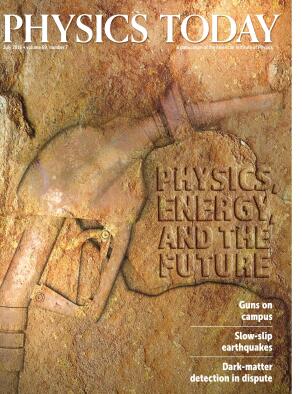Getting up close and personal with military explosives
DOI: 10.1063/PT.3.3223
Plenty of people have been lured into science after watching an explosion or perhaps blowing up something themselves. US Army chemists routinely perform both those activities in an effort to determine how to trigger more effective explosions and to protect soldiers from unexpected blasts. The challenge is to analyze explosions up close, preferably within a few meters, while obtaining enough information to avoid the costly task of repeating the test detonation multiple times. Kevin McNesby, from the US Army Research Laboratory at Aberdeen Proving Ground in Maryland, and his colleagues have developed a multisensor apparatus that can simultaneously probe the temperature, pressure, chemical species, and energy deposition of an explosion. During detonations of subkilogram samples of TNT and C-4, a spectrometer paired with cameras shooting at up to 40 000 frames per second mapped the temperature of the expanding fireballs and tracked the corresponding shock waves. Rapid bursts of bright 510 nm laser light enabled cameras to peek inside the comparatively dark fireballs; the researchers exploited the technique to determine that an unlucky manikin placed 2 m from the detonation of 600 g of pentolite experienced 25 psi of overpressure, which is usually fatal to humans. Crucially, images such as the ones here reveal that despite engineers’ best efforts, explosions always exhibit some degree of asymmetry, which affects how energy is released. Information-rich diagnostic tests by McNesby and others could help military engineers develop explosive devices that emit immediate, more evenly distributed bursts of energy. (K. L. McNesby et al., Rev. Sci. Instrum. 87, 051301, 2016, doi:10.1063/1.4949520

More about the Authors
Andrew Grant. agrant@aip.org





